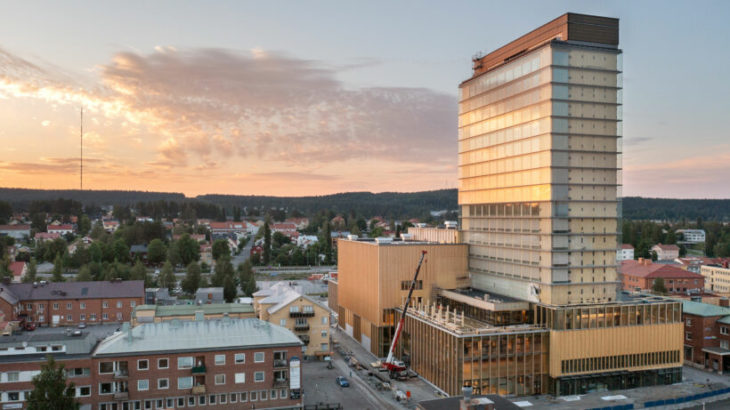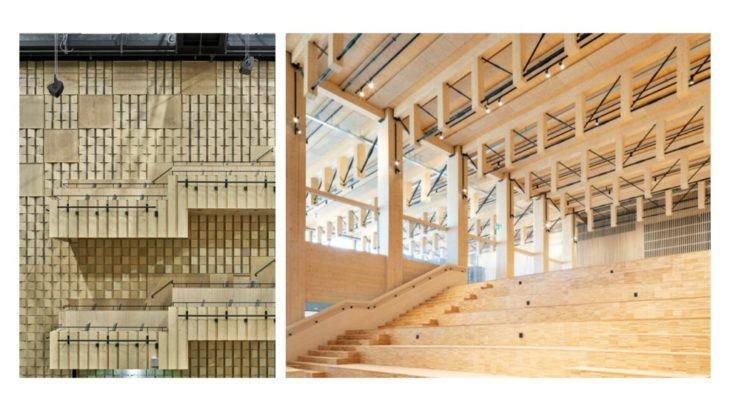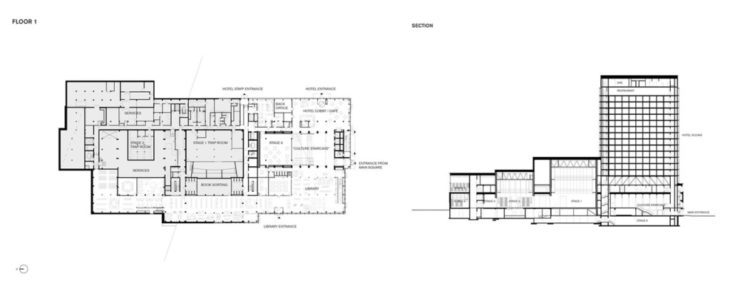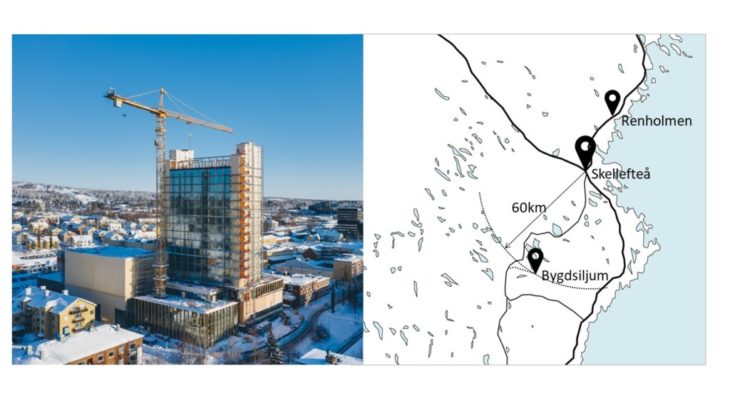Context
With as much as 70% of its land area covered in forest, Sweden has a big forestry industry, making the 10-million-inhabitants country the world’s second exporter of pulp, paper, and sawn wood products. There is a long tradition in building with wood that has evolved enormously in recent decades, thanks to new mass timber products such as glulam (glue-laminated timber) and CLT (cross-laminated timber), taking the traditional one-to-two-story structures to unimaginable heights. The milestone of this development, Sara Cultural Centre, was inaugurated last September in northern Sweden, in the city of Skellefteå, some kilometers below the Arctic Circle.

Exterior view of the Sara Cultural Centre, Skellefteå. Source: White Arkitekter
The project
Sara Cultural Centre (Sara Kulturhus in Swedish) designed by White Arkitekter, is one of the world’s tallest timber buildings to date, with its 20 floors rising almost 80 meters above the ground. The cultural complex houses a theater, a museum, Skellefteå’s Art Gallery, the City Library, and a hotel. This broad program is aimed to entertain the city’s growing population, expected to rise from around 73 200 inhabitants to 90 000 in 2030.

Interior images of the building. Source: White Arkitekter
The use of timber
The choice of a timber structure is a consequence of both the region’s cultural and economic relationship with the forest and the will to develop the city in a sustainable way. In the case of Sara Cultural Centre, the timber was harvested only 60 km away from the building plot and manufactured nearby, reducing CO2 emissions and contributing to the local industry where many inhabitants work. The building not only puts Skellefteå on the map, it also gives its community something to be proud of.

Plan and longitudinal section. Source: Dezeen
Maybe even more interesting than the project itself, it is the energy it has generated from the very beginning. From the seeds that germinated and grew into trees in the Swedish forest, storing carbon in the process, through the harvesting, manufacturing, conception and construction phase, we can follow the transformation, generation and storage of carbon, which will continue through the lifespan of the building.

Image of the building construction. Source: White Arkitekter. Plan showing the distance between the city and the timber manufacturing plants
A model
The cultural center has had a big impact in the media, both nationally and internationally. With its many awards (and probably more to come) it has undoubtedly put the city on the map, and it is already a landmark attracting tourists to northern Sweden and Skellefteå. Other than its architectural qualities, the building’s power comes from the fact that it is showing another architecture possible, one that is not only necessary, but urgent, if we want to confront the problem of climate change in a context of a growing population. In this scenario, building densely with timber in cities, stocking the carbon into the building’s structure, while avoiding the emissions that would be generated if we were using steel and concrete, is the way to go.
For more information about the project, visit:
Growing with wood is a project of IAAC, Institute for Advanced Architecture of Catalonia developed for MMTD in 2021 by student Maria Cotela Dalmau. Faculty: Daniel Ibáñez. Course: Narratives.